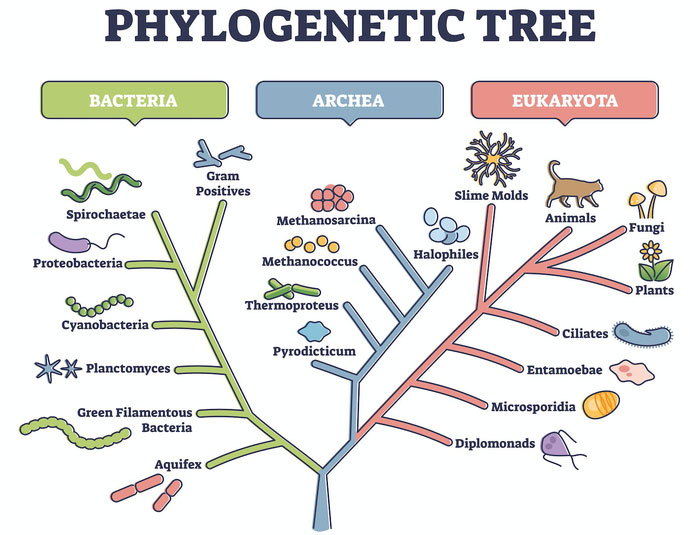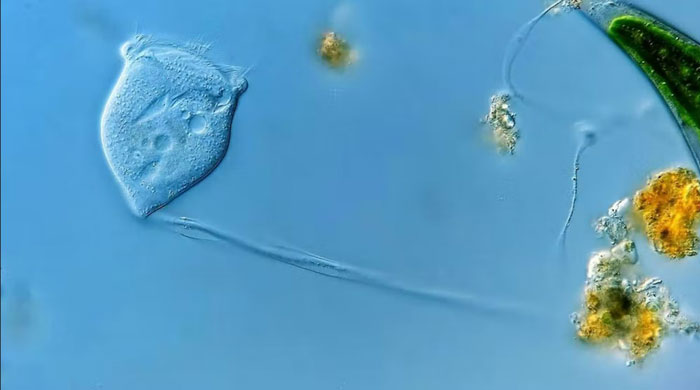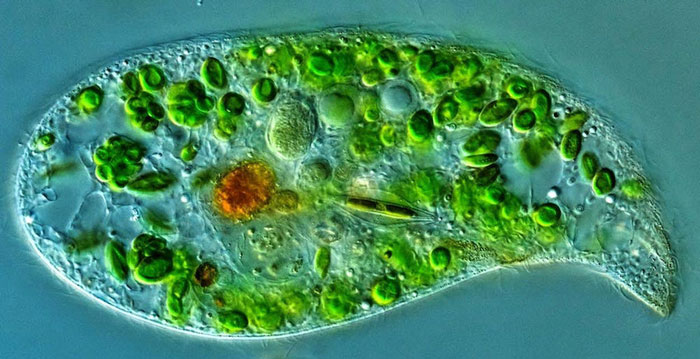The reason very few scientists have observed these microorganisms is due to the difficulty in sampling. This means that most research groups only sample from a few or even just one location.
You are more likely to take a trip to the Moon than to see a microorganism (bacteria) named Legendrea loyezae under a microscope.
Nasa’s Apollo program sent a total of 24 people to the Moon between 1968 and 1972. However, as of now, only four people have ever found Legendrea loyezae since its discovery in 1908.
This means that the number of people who have traveled to the Moon is more than six times greater than the number of those who have seen this microorganism with their own eyes. But in reality, seeing this microorganism does not require a billion-dollar budget like trips to the Moon; we just need a microscope and a person willing to sit in front of it.
Recent research has discovered 20 new species of bacteria as well as 100 rare species. Each DNA sample that scientists find provides another piece of the puzzle about evolution. Scientists can use this puzzle to analyze how an organism functions. For example, some genes suggest how an organism breathes or may provide information about its position on the tree of life.

As of now, only four people have ever found Legendrea loyezae.
The real reason behind the very few people who have seen this microorganism is the extreme difficulty of sampling. This means that most research groups only sample from a few or even just one location.
The latest investigation by scientists, lasting two years, involved collecting and investigating over 1,000 samples. From lakes and ponds in Warsaw, Poland, to marine sediments in the North Sea and Mediterranean off the coasts of Italy and Portugal, to chalk streams in Dorset, UK, the efforts were rewarded: the research team found over 500 species, including rare and new ones.
The first life on Earth emerged underwater as organisms too small for the human eye to see, and they have existed that way for billions of years. Microorganisms live around us. They can be found in any habitat, from puddles to oceans. But there is still so much we do not know about them. Some of these tiny organisms have evolved from simple to more complex forms, ultimately creating all the visible life around us. Among them are species that have hardly changed and have remained the same size since their formation.
Microorganisms are the first predators on Earth, and their appetite has driven the evolution of more complex life forms during the early history of the Earth. After the evolution of complex life, microorganisms became the main food source for other organisms such as mollusks and plankton, and over time, evolution has made them food for larger species. If the organisms at the bottom of the food chain disappear, all other parts above them will collapse.
If we were to compress the Earth’s 4.5 billion-year history into a single year, life would exist at a microscopic scale until the end of October. Humans would appear in the last 30 minutes of the year, and we would have only been aware of the existence of bacteria for less than three seconds before the year ends.

The Tree of Life shows how organisms are related to each other. Looking at it, you can see that most life on Earth still exists at a microscopic scale, with animals, plants, and fungi only limited to a small cluster of branches in the eukaryotic group. In contrast to the other two groups, archaea and bacteria, members of Eukarya store their DNA in a cell nucleus.
Legendrea loyezae belongs to the ciliates branch of Eukarya. Oxygen would be lethal to Legendrea loyezae, and it has retractable tentacles that can contract to capture prey. Scientists have now discovered thousands of ciliate species.
Ciliates live in aquatic environments, thin water films in soil, and even in anaerobic conditions. Although their life depends on water, they can form protective structures to remain dormant until they encounter a water environment. They consist of a single cell and are highly diverse. Ciliates have interesting predatory strategies—some specialize in eating filamentous cyanobacteria and can swim. Others have a sedentary lifestyle, including Vorticella, which has a stalk to attach to submerged surfaces.

Legendrea loyezae belongs to the ciliates branch of Eukarya.
Some ciliate species form permanent, material relationships with other groups of organisms, known as symbiosis. For example, they may contain green algae inside them to consume the sugars produced by the algae through photosynthesis. In return, they protect the algae from larger algae and viruses.
Some ciliate species live in densely populated communities, especially in fully oxygenated environments. But others exist in such low numbers that finding them is like searching for a needle in a haystack the size of Mount Everest.
The goal of scientists is to discover as many of these rare and unusual species as possible. They will use their knowledge of the ecosystem of the species as clues. If we know that a microorganism prefers to live in a dark, oxygen-free habitat, we will not search for it on the water’s surface where there is plenty of oxygen and light. In fact, the research team has spent thousands of hours looking through microscopes to find four samples of Legendrea loyezae.

We cannot grow food without microorganisms.
Microorganisms are responsible for the existence of our ecosystems and their recovery after damage such as pollution or climate change. We cannot grow food without microorganisms. They clean our wastewater. Some can produce antibiotics, while others are involved in food production.
Therefore, studying and exploring the mysteries of microorganisms is incredibly important and worth investing money and effort into.


















































